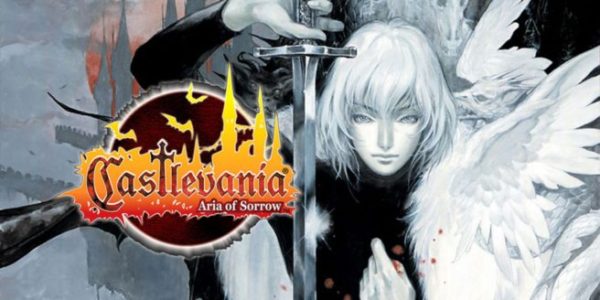
After Castlevania: Symphony of the Night was released in 1997, Konami tried to recapture the magic numerous times. While their subsequent console games never really captured the heights of Symphony due to the shift to 3D, Konami’s handheld offerings were a different story. With Circle of The Moon and Harmony of Dissonance, Konami experimented more with the Metroidvania format they used in Symphony and tried to replicate the success they had. Sadly, as good as these two games were, they were held back by some issues. Circle of the Moon had lighting issues on the original release that hampered what was a rather unique take on the genre, with new ways of equipping powerups, while Harmony of Dissonance felt too samey at times and had one of the worst soundtracks yet for the series.
It was in their third outing on the GBA however, that Konami finally nailed the experience in the handheld format with Aria of Sorrow. Rather than take place in the past, this game was set decades into the future and saw you play as a new character unconnected to the Belmont family. Soma Cruz was a high school exchange student in Japan and while visiting a shrine with his childhood friend Mina Hakuba ( the time discrepancy issues being due to localization) during a solar eclipse, when they are swept up into Dracula’s Castle which is in the eclipse. Soma and Mina are attacked by monsters and rescued by a man named Genya Arikado, whose true identity becomes clear later on. Soma soon learns he has the power to absorb monsters’ souls and use their powers for himself. What follows is one of the best games in the series yet.
There were three main types of souls you could get using the game’s Tactical Soul System including Bullet, which acts as sub weapons, Guardian allows transformations and summons, and Enchant which provides new abilities or stat changes depending on which is equipped. While the first two types of souls use magic points to use, Enchant souls will remain active as long as they are equipped. There is also a fourth type called Ability, but these stay equipped to you always once you gain them and do not cost any magic whatsoever to use.
Aria of Sorrow was the culmination of everything that came before, it built on ideas from the previous two GBA games and removed the flaws, while also putting in ideas that clearly marked it as the successor to Symphony that fans had wanted for so long. Yes, the music was not as good, but it was still the best of the GBA games and very well done for the system. The visuals were amazing then and playing the game on a modern console shows that the visuals still look great on modern TVs today.
There were many references to other games in the series, such as the appearance of a Belnades family member, music from the older games, and even Alucard’s coffin from Symphony appearing in the save rooms. What made this game stand out the most was not just the gameplay and presentation though, it was the big twist that occurred if you got the true ending path. While I will not spoil it here for any who have not played this yet, this was perhaps the boldest move the series could take and went far into detail about the lore of the series and of certain characters.
Aria of Sorrow proved to be the follow-up to Symphony Of The Night fans had wanted for a long time, but I will go further. I feel the game surpassed Symphony of the Night all things considered and created the best Castlevania experience yet. While its own sequel Dawn of Sorrow was not as good, Aria of Sorrow remains the high point of the series for this author and a game that will take much to surpass.

